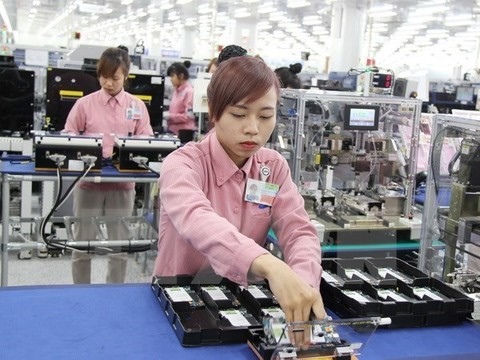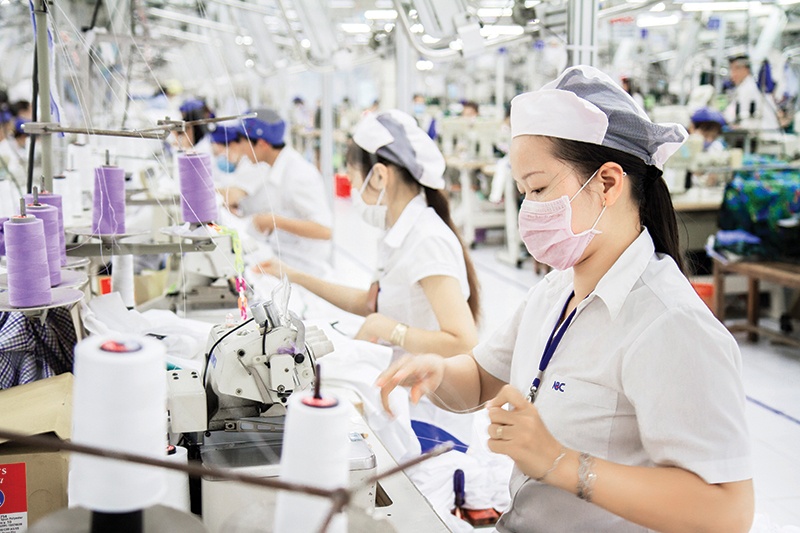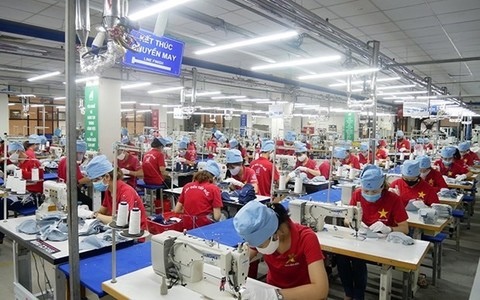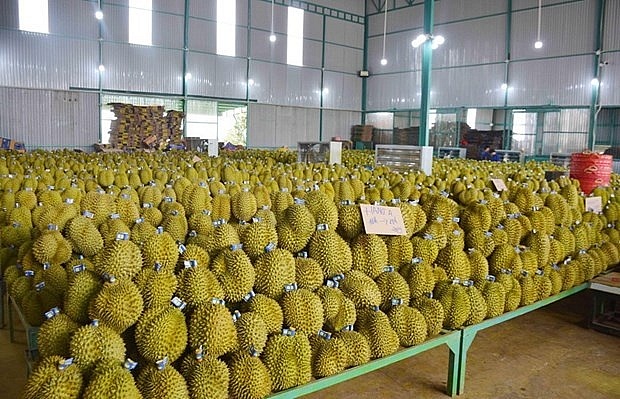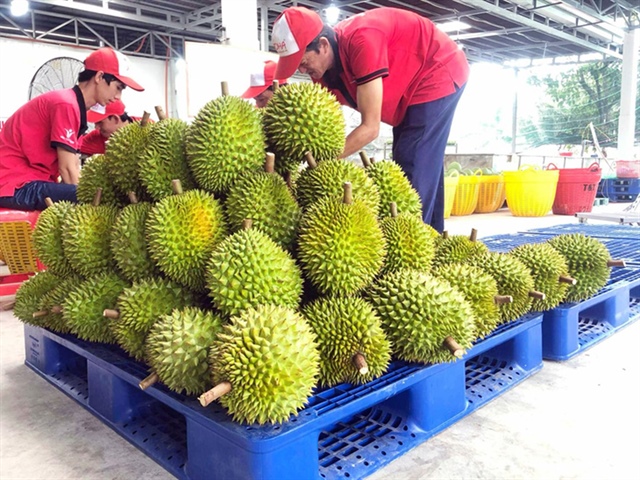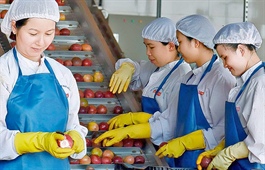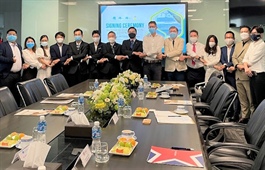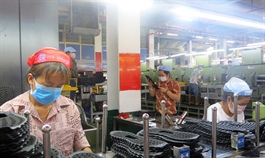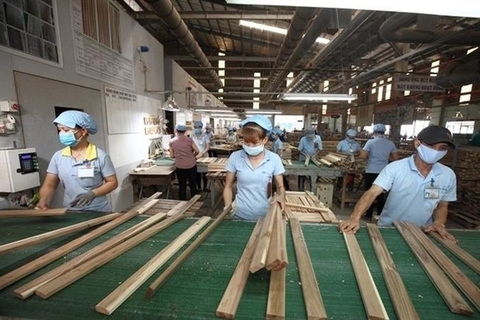Enterprises of agricultural export to China strive to adapt to new market regulations after COVID-19 impacts
Enterprises of agricultural export to China strive to adapt to new market regulations after COVID-19 impacts
China's increasing demand for imports of high-quality agricultural products has contributed to boosting the recovery of domestic production and export after the COVID-19 pandemic impacts.
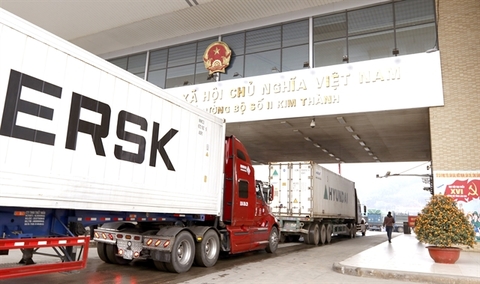
However, that also challenges Viet Nam’s agricultural production and export especially in dealing with China's new market regulations that require Vietnamese businesses to change to adapt with them, experts and experienced businesses have warned.
Deputy Director of the Asia-Africa Market Department, Ministry of Industry and Trade (MoIT), To Ngoc Son, said the increase in the number of middle-class people in China has resulted in an increase in demand for high-quality products. More and more Chinese consumers request imported products with high quality and clear traceability.
China has recently undertaken a series of policy adjustments in importing agricultural and foodstuff products. Its General Administration of Customs (GAC) has issued Order 248 and Order 249 demanding all foreign enterprises producing food for export to China must register with Chinese Customs. The two new regulations will take effect from January 1, 2022, and are predicted to directly affect Vietnamese food enterprises that have been and are wishing to export to the Chinese market.
According to Son, for businesses that have exported to China for many years to understand and have a vision of development, such changes are not new or not much difficult for them in dealing with.
However, for many others that follow a locally so-called trading practice of an xoi (temporary trading) or those that consider China as just a normal market and they often export through unofficial channels, such changes are challenges for them.
“It is not international trade at all,” Son said.
“In international trade relations, two businesses must link together by signing a contract and have commitments for payment conditions, delivery time, and quality management so that they have a sustainable co-operation.”
As the country’s export transhipment area with more than 231km of border with China’s Guangxi Province, the northern mountainous province of Lang Son has a diverse border gate system including two international, one main and nine auxiliary border gates.
Director of Lang Son Department of Industry and Trade, Nguyen Dinh Dai, said that import-export activities had been very active in recent years with growth results in 2021 increasing compared to 2020. Total import and export turnover in the first 10 months of 2021 reached US$3.45 billion, up 52.7 per cent over the same period last year, in which, exports reached US$1.09 billion, up 11 per cent and agricultural export turnover reached US$920 million, up 15 per cent.
According to Dai, at present, the cooperation between Viet Nam and China is deepening in all fields. China continues to be Viet Nam's largest agricultural export market.
Meanwhile, Nguyen Lan Huong, Chairwoman of Hoa Viet International Agriculture Joint Stock Company’s (HOVIFOOD JSC) management board said as an intermediary enterprise that has exported bananas to the Chinese market since 2013, the company has set a target to export durian, sweet potato and chili through official channels to China -- the market coveted by the whole world, not only Viet Nam.
Huong believes China’s new Order 248 on “registration and management of foreign food production enterprises” and Order 249 on “measures for managing import and export food safety” issued by the GAC is completely appropriate.
However, she said many domestic enterprises had not yet been fully updated with details of the new regulations.
Huong also admitted: "We just learned, for example, that it will be a violation of China’s food safety regulations if there is a dog raised inside the enterprises’ production areas. I see that almost all factories have dogs, even the most crowded one has more than 20 dogs as a force for guard duty. So in the coming time, we must pay attention to this issue when the GAC undertakes online checking.”
The Director of An Huy Co., Ltd (Long An) Vo Quan Huy said that the Chinese market had become more and more demanding in recent years.
“This is also the general trend of the world. China and Viet Nam have developed trade for many years," Huy said.
"The problem is how we can harmonise regulations for both sides towards developed commodity production.”
Director of SPS Vietnam Office and Deputy Director of the Department of Agricultural Processing and Market Development Le Thanh Hoa noted that requirements from China are gradually approaching those of developed countries. Therefore, enterprises should pay attention to comply strictly with the provisions of Orders 248 and 249, to avoid export delays.
To support export businesses, Son said, in the future, the MoIT will continuously coordinate with the Ministry of Agriculture and Rural Development (MARD) to disseminate localities, associations and enterprises about the provisions of China’s Order 248 and 249. The MoIT will also continue to urge the GAC to soon respond and issue a registration number to the list of Vietnamese food manufacturing enterprises, ensuring bilateral trade stability. However, it must be affirmed that ministries and branches just can only support. Businesses need to be actively adapting to market changes. The participation of localities plays an important role in helping them too.
Nguyen Thi Diem Hang, Vice Chairwoman of the Board of Directors and General Director of Viet Nam Organic Nutrition Food Joint Stock Company (Nutri Mart supermarket chain) said this was an opportunity for Vietnamese enterprise to review their “path” of development to adapt to the new changes. On her business side, Hang said the company was developing processed product lines as well as promoting distribution on e-commerce channels and at the same time building a standard raw material area.
She said "selling is not a difficult story, the problem is to change the cultivating and processing practice”.
“That is a long story,” Hang added.
China’s new market regulations are signals that make Viet Nam's thought about agricultural production change. However, what many experts now worry about is that many enterprises exporting to China have not yet met Chinese requirements.
Experts recommended management authorities should coordinate and ask provincial Departments of Agriculture and Rural Development to review enterprises that have already been granted registration codes before the Chinese side conducts online checks. This will help enterprises ensure meeting real standards that Chinese partners have requested them to have.
Changes to adapt to new market conditions is a must, according to experts. Therefore, State agencies need to set up special centres and working groups to guide businesses, cooperatives and specialised local agencies to complete procedures required by the Chinese market.
However, in the long run, it is necessary to have a specific strategy to brand Vietnamese agricultural products in the Chinese market. To build a brand, it must start from product quality management, cultivation, harvest, procession, packaging and transportation.
China is no longer an easy market since its quality requirements and technical barriers to agricultural and aquatic products are increasing, requiring businesses to quickly innovate quality and production methods.
Nong Duc Lai, Commercial Counsellor of the Vietnamese Embassy in China recommended that businesses need to increase the application of production models following the VietGap and GlobalGap standards to fully meet China’s increasing demands on quarantine tests.
According to MARD Minister Le Minh Hoan, it is necessary to develop an overall strategy and action plan to boost agricultural and aquatic product exports to China, speed up the digital transformation in agriculture to have a proper database of supply and demand, and promote the model of logistics centres with public-private partnership.


